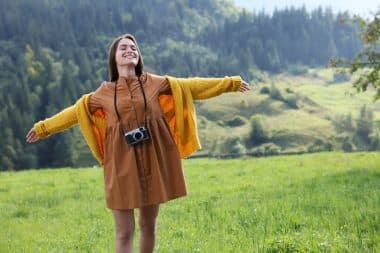The beautiful peaks of the Alps or the breathtaking mountains of the Pyrenees attract numerous holidaymakers every year. To ensure that you are sufficiently equipped for hikes or long walks at high altitudes and valleys, you should put together your luggage carefully. We provide you with the appropriate checklists and tips for this.
The right clothing for a mountain holiday
If you don’t just go to the mountains to unwind and spend a wellness holiday there, you need suitable outdoor clothing. Which pieces absolutely belong in your luggage depends on the respective season. In principle, however, you should take these items of clothing with you:
- Breathable underwear with a perfect fit and high freedom of movement
- Long and short hiking pants with practical pockets
- Short-sleeved hiking shirt for warm days
- Long-sleeved hiking shirt for cooler weather or sun protection
- A softshell jacket that protects against wind and moisture
- Possibly a rain jacket with a waterproof surface.

In addition, it can be useful to pack a cardigan even in summer. As soon as the sun disappears behind the clouds, it quickly gets cool high up in the mountains. For example, cardigans can be used to regulate heat exchange, because the practical parts can be worn open or closed as well as an additional layer under the jacket. If you’re out in the mountains in spring, autumn or winter, you’ll need extra layers to keep you warm. Thermal underwear and fleece jackets are then the order of the day. Gloves, headbands and hats may also be necessary.
Robust footwear in the right size
In addition to a neat outfit, you need shoes that can withstand the demands of the mountains. They should have a profiled sole and consist of a robust upper material. It is best to impregnate the shoes before the trip so that they repel moisture. Also, break in your footwear before your holiday so you can make sure it fits properly. Suitable hiking socks and insoles have an effect on comfort. Again, you can experiment a little in advance. Merino wool socks are a suitable choice because they are breathable and keep you warm.
Note: Suitable footwear is essential for a safe step. Your toes should still have a little room in the front. At the back, the heel must sit firmly. Also, pay attention to where you go. It is best to stick to marked hiking trails and always be attentive. Do not underestimate the dangers and always check the weather forecast before a longer hike.
Small first-aid kit for the mountains
For the mountain holiday, pack everything you would otherwise put in your first-aid kit. These include painkillers, plasters, wound dressings and a wound healing ointment. The following products should also be taken with you for a mountain or hiking holiday:
- Awning: At high altitudes, UV radiation is particularly strong. Take plenty of sunscreen and a lip balm stick with UV protection.
- Blister plasters: Painful blisters can spoil any view, no matter how beautiful. The best way to get none in the first place is to choose the right footwear. If it does happen, you can help yourself with blister plasters. They protect the bladder and relieve the pain a little.
- Insect repellent: Especially in the summer months, you have to expect mosquito bites. Therefore, pack an appropriate protective spray. This should definitely contain the active ingredients DEET or Icaridin.
Extra luggage for multi-day hikes
Of course, the optimal luggage composition depends on how you will spend your holiday in the mountains. For example, if you plan to hike from hut to hut and sleep or even camp in a different accommodation every night, you will need additional equipment:
- Hand wash: This allows you to quickly wash your clothes on the go, so you don’t have to carry around as much.
- Small Gas Stove: Those who hike diligently consume a lot of calories. With a gas stove, you can prepare hot meals even in the wilderness. For hiking, there are particularly small and light models.
- Tent: It is important to have a low weight, after all, you have to carry the tent around with you. In summer, a tarp may be the better and lighter solution.
- Sleeping pad: This means that the floor no longer feels so cold and uneven.
- Sleeping bag: It keeps you cosy and warm at night when camping or in hiker’s huts. Be sure to buy a model in the right temperature range.
Note: Wild camping is prohibited in Germany and many other European countries. However, in Norway or Sweden, it is allowed as long as you follow certain rules and do not stay in one place for more than one or two nights. The exact provisions can be found in the so-called
“Everyman’s Right” of the respective country
.


